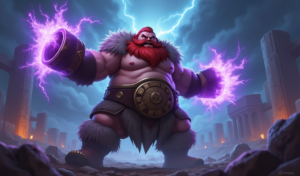Overview
How to play Soraka effectively requires mastering her unique health-sacrifice healing mechanics while maintaining proper positioning and utilizing her surprising offensive capabilities through strategic Q-W combos and silence placements. Beyond being a mere healbot, Soraka can control lanes with proper poke, optimize builds around healing amplification, and leverage advanced utility techniques to counter enemy engages and turn team fights with well-timed global healing.
Table of Contents
Introduction to Soraka
Learning how to play Soraka effectively can transform you into one of the most impactful support players in League of Legends. As the quintessential healing support, Soraka brings unparalleled sustain to her team while possessing surprising offensive capabilities that many players underestimate. In this comprehensive guide, we’ll explore five essential tips that will elevate your Soraka gameplay from basic to masterful.
Soraka stands apart from other enchanter supports with her unique health-sacrifice healing mechanic. Unlike Sona’s aura-based support style or Nami’s versatile kit, Soraka’s entire identity revolves around keeping allies alive through calculated healing. This guide will help you understand how to play Soraka to her full potential, balancing her healing prowess with proper positioning and game awareness.
Whether you’re a complete beginner or looking to refine your skills, these five tips will give you the foundation needed to climb the ranked ladder with the Starchild. Let’s dive into what makes Soraka one of the most powerful—yet often underrated—support champions in League of Legends.

Tip 1: Master Soraka’s Healing Mechanics
The core of learning how to play Soraka effectively revolves around mastering her healing mechanics. Unlike other supports, Soraka’s W (Astral Infusion) costs her own health, creating a unique resource management minigame that defines her playstyle.
First, understand the critical interaction between your Q (Starcall) and W abilities. Landing your Q on enemy champions grants you the Rejuvenation buff, which restores your health over time. Moreover, when you cast W on an ally while having this buff, you transfer the healing effect to them without paying the health cost yourself. This crucial mechanic is what separates good Soraka players from great ones.
To maximize your healing potential, practice the following sequence:
- Land Q on an enemy champion to gain Rejuvenation
- Immediately heal your ally with W to transfer the regeneration effect
- Position safely until your Q cooldown resets
- Repeat this cycle to maintain maximum healing output
Your ultimate ability, Wish (R), heals all allies globally and increases in strength when targeting low-health champions. Don’t save it exclusively for team fights—using it to save allies in different lanes can completely reverse the momentum of a game. According to official League of Legends statistics, well-timed global ultimates can increase win rates by up to 5%.
Remember that Soraka’s healing scales primarily with ability power and healing/shielding power. Items like Moonstone Renewer and Staff of Flowing Water will significantly amplify your healing output, making you an even more potent sustain machine as the game progresses.
Tip 2: Perfect Your Positioning and Safety
Mastering how to play Soraka means understanding that you’re often the primary target in team fights. Your positioning is arguably even more critical than your healing output, as a dead Soraka provides no value to her team.
Always maintain a safe distance behind your frontline, ideally just close enough to heal allies but far enough to avoid enemy engage tools. This typically means staying at the maximum range of your W ability (550 units). For reference, this is slightly shorter than most ADC auto attack ranges.
When warding, never face-check bushes. Use your E (Equinox) to check suspicious areas, as its silence can reveal and temporarily disable hidden enemies. If you must venture into fog of war, coordinate with your jungler or another teammate who can absorb potential ambushes.
Learn to track enemy cooldowns, particularly gap closers and crowd control abilities that can lock you down. Champions like Zed, Talon, and Rengar will often prioritize you in fights, so position accordingly when they’re missing from the map or have ultimate abilities available.
During lane phase, align yourself parallel to your ADC rather than behind them. This positioning forces enemies to choose between targeting you or your carry, rather than being able to damage both with area-of-effect abilities. This technique is commonly used by professional support players like CoreJJ and is particularly effective on fragile enchanters like Soraka and Janna.
Finally, master the art of “trading stance” in lane—position yourself to punish enemy ADCs when they step up for last hits. Your Q is perfect for this, as it slows enemies and heals you, creating favorable trades even against traditionally stronger lane opponents.
Tip 3: Optimize Your Item Build Path
A key aspect of learning how to play Soraka effectively is understanding her item progression. Unlike tank supports like Leona who build defensively, Soraka thrives with items that amplify her healing power while providing utility.
Start with Spellthief’s Edge as your support item to maximize gold generation through poking with your Q and auto attacks. The additional ability power also enhances your early healing potential. Upgrade this to Frostfang and eventually Shard of True Ice as you complete the support quest.
Your mythic item choice should almost always be Moonstone Renewer. This item provides exactly what Soraka needs: ability power, ability haste, and increased healing power. Its passive effect stacks during extended fights, making your heals progressively stronger as battles continue.
After your mythic, prioritize these core items based on the match situation:
- Chemtech Putrifier – Essential against healing-heavy teams (Mundo, Yuumi, Soraka)
- Staff of Flowing Water – Provides movement speed and AP to allies you heal
- Redemption – Adds another global healing ability to complement your ultimate
- Mikael’s Blessing – Offers crucial cleanse against heavy CC compositions
Defensive boots are typically preferable over Ionian Boots despite the CDR loss. Plated Steelcaps against AD-heavy teams or Mercury’s Treads against CC-heavy compositions will help you survive focus fire. As ProGuides suggests, survival should be your priority over raw healing output.
For runes, Summon Aery synergizes perfectly with your healing playstyle, providing both offensive poke and defensive shields. Secondary tree options include Resolve for added durability or Inspiration for utility. Always take the Revitalize rune, as it directly amplifies both your healing and self-sustain capabilities.
Tip 4: Control the Lane with Proper Poke
Many players learning how to play Soraka make the mistake of playing too passively in lane. While your primary identity is as a healer, your Q (Starcall) gives you surprising poke potential that should be leveraged to control the lane.
Your Q has a relatively short cooldown and restores your health when it hits champions. This means that well-placed Starcalls create a double advantage: damaging enemies while sustaining yourself. The slow effect also enables your ADC to follow up with additional damage or disengage from unfavorable trades.
Practice predicting enemy movement to improve your Q accuracy. Aim slightly ahead of where enemies are moving, especially when they’re approaching minions for last hits. With practice, you can achieve a hit rate above 70%, creating significant lane pressure.
Auto attacks are another underutilized aspect of Soraka’s kit. Weave auto attacks between your abilities, particularly after landing a Q when enemies are slowed. This maximizes your damage output and accelerates your support item gold generation. Remember that your auto attack range (550) is respectable for a support and should be used whenever safe to do so.
Against aggressive lane opponents like Morgana or Thresh, use your E (Equinox) defensively to create zones of safety. The silence prevents enemies from using their abilities, effectively shutting down engage attempts. Conversely, against enchanters like Lulu or Karma, place your E offensively to prevent their disengage tools.
Always communicate with your ADC about your aggression levels. Soraka works best with ADCs who can follow up on your poke, such as Jhin, Caitlyn, or Ezreal. Their long-range abilities complement your Q slow, creating powerful poke combinations that can force enemies out of lane or set up kills.

Tip 5: Utilize Advanced Utility Techniques
Mastering how to play Soraka at the highest level means going beyond her healing capabilities and leveraging her full utility potential. While healing is your primary function, your silence and root combinations can single-handedly win team fights when executed properly.
Your E (Equinox) is one of the strongest counter-engage tools in the game. Learn to identify key enemy champions whose abilities you want to interrupt, such as Katarina’s ultimate, Malzahar’s suppression, or Fiddlesticks’ crowstorm. Placing your silence directly under these champions as they begin their abilities can completely negate their impact.
For maximum effectiveness, practice the E-Flash technique. This involves casting E and then immediately using Flash to reposition the silence field, catching enemies off guard. This advanced technique is particularly useful for silencing multiple priority targets or reaching backline threats who are targeting your carries.
Your silence field creates a root effect after a short delay. Use this knowledge to your advantage by placing it slightly ahead of fleeing enemies or in narrow jungle corridors during pursuits. The root can secure kills, peel for allies, or create space for objectives like Baron or Dragon.
Unlike Seraphine’s utility which focuses on area control, Soraka’s utility is about precise timing and placement. Coordinate your silence with your team’s crowd control for chain CC effects that can lock down targets for several seconds.
Finally, use your ultimate not just for healing but for the combat advantages it provides. Casting Wish during a close duel or skirmish can bait enemies into overcommitting, thinking they have a kill secured only to have your teammate survive with restored health. This psychological element of Soraka’s kit is often overlooked but can be tremendously powerful in creating favorable fights.
Conclusion
Mastering how to play Soraka transforms you from a simple healbot into a game-changing support who can influence every aspect of a match. By implementing these five essential tips—mastering her healing mechanics, perfecting your positioning, optimizing your builds, controlling the lane with poke, and utilizing her advanced utility—you’ll elevate your Soraka gameplay to new heights.
Remember that Soraka’s strength lies not just in her healing numbers but in how you apply those heals strategically throughout the game. Your global presence with Wish, combined with properly timed silences and roots, makes you a formidable support who can shut down threats while keeping your team healthy.
As you continue to practice how to play Soraka, focus on balancing aggression with safety, and healing output with utility. The best Soraka players are those who adapt their playstyle to each unique game situation rather than following a one-size-fits-all approach.
With dedication to these principles and consistent practice, you’ll find yourself climbing the ranked ladder and earning the respect of both teammates and opponents as a Soraka main who truly understands the champion’s full potential.
Frequently Asked Questions
Is Soraka good for beginners in League of Legends?
Yes, Soraka is excellent for beginners due to her straightforward healing mechanics and relatively simple ability kit. Her global ultimate also teaches map awareness, making her a great champion to learn support fundamentals.
How do I deal with Grievous Wounds as Soraka?
When facing Grievous Wounds, focus on increasing your raw healing power through items like Moonstone Renewer and Staff of Flowing Water. Additionally, time your heals carefully after the Grievous Wounds effect has expired when possible.
Should Soraka build full AP or utility items?
Soraka should primarily build utility items with healing amplification rather than pure AP. Items like Moonstone Renewer, Redemption, and Staff of Flowing Water provide more value than raw AP items in most situations.
When should I use Soraka’s ultimate ability?
Use Soraka’s ultimate to save allies in critical situations, turn around close fights, or support teammates during important objective contests. Don’t save it exclusively for perfect moments—using it early to prevent deaths is often more valuable than holding it too long.
How do I position in team fights as Soraka?
Position behind your frontline but within healing range of your carries, typically at the maximum range of your W ability. Stay near walls or terrain that can block enemy gap closers, and always be ready to move if enemies attempt to focus you.




